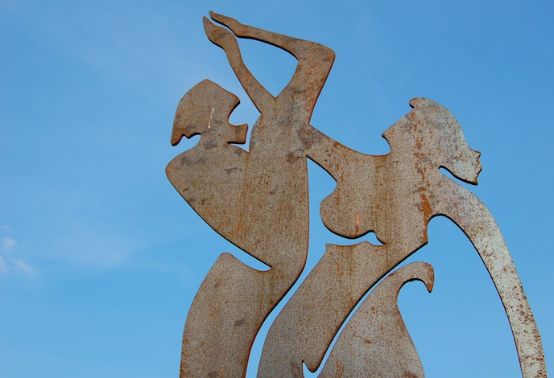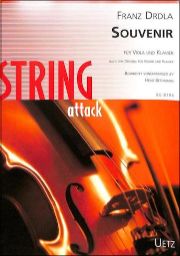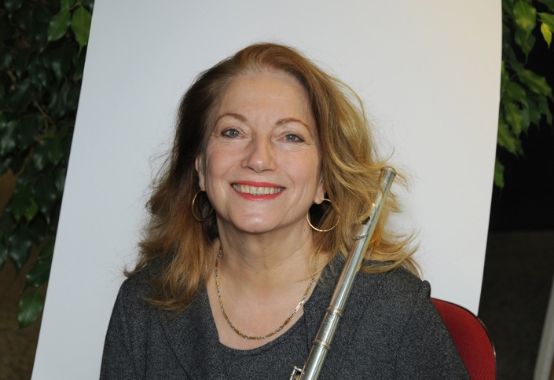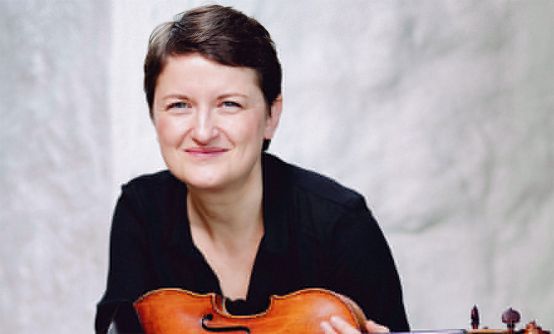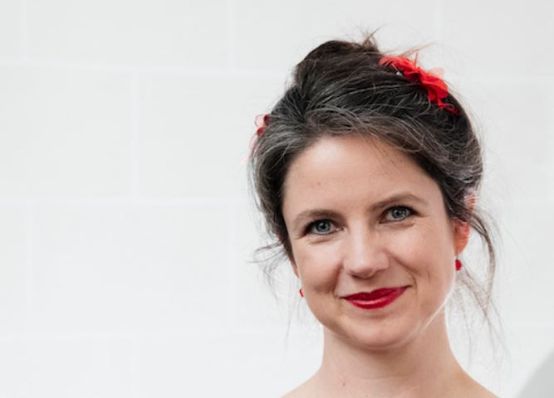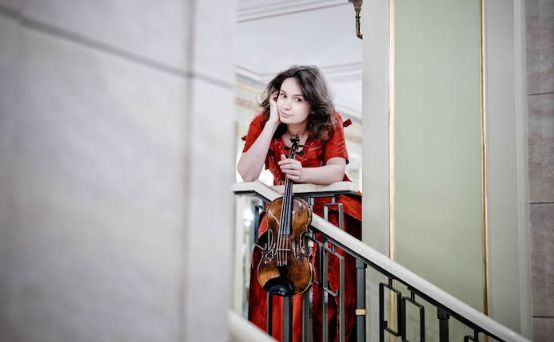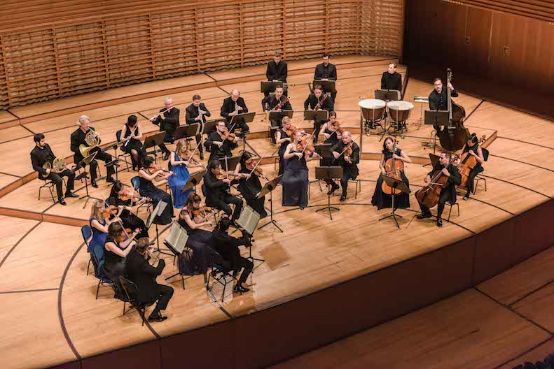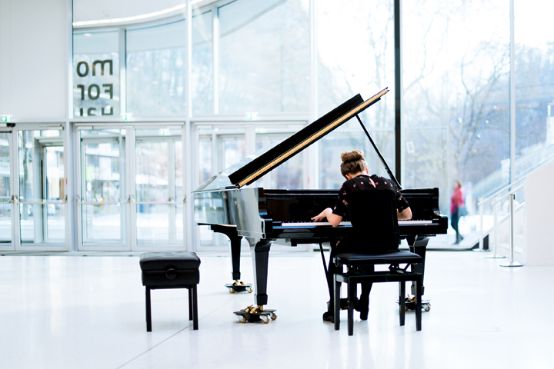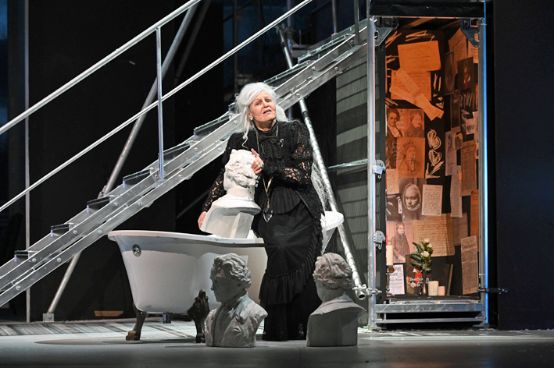
No, Beethoven as a person does not appear in this opera. His music is also only quoted recognizably once, when towards the end, like a commentary from offstage, the vocal quartet Mir ist so wunderbar from Fidelio can be heard. But the focus is on Beethoven's daughter, and her name is Minona. How could anyone who is even halfway informed about music history think that there is no mention of Beethoven's paternity anywhere in scholarship?
But it is certainly possible. At least that is the thesis of Jüri Reinvere, author of the opera Minonawhich has now been premiered in Regensburg, Bavaria, at the start of the so-called Beethoven Year. The composer, who was born in Estonia in 1971 and has lived in Frankfurt am Main for several years, carried out meticulous research before writing the libretto in order to substantiate his assumption and thus the plot of his opera. Among other things, he found documents in his home town of Tallinn that provide a deep insight into Minona's family history.
The ominous "distant lover"
The pivotal point of the story is the mysterious person to whom Beethoven dedicated his song cycle To the distant beloved of 1816 and who is presumably identical to the "immortal beloved" to whom he addressed a letter in 1812 after a short stay in Prague, but never sent it.
Reinvere suspects that this figure, whose anonymity Beethoven carefully guarded, was the Hungarian Countess Josephine von Brunsvik, married to von Stackelberg; she was Beethoven's piano pupil and he was demonstrably strongly attracted to her. In those July days of 1812, when Beethoven was in Prague, he is said to have met her secretly, according to Reinvere's theory, and that is when it is said to have happened. But there is only circumstantial evidence, no proof that Josephine was in Prague at the time. But there was another woman who was also very close to Beethoven: Antonie Brentano. The biographical fog will probably never be completely cleared.
Historical and artistic truth
Historical research is one thing, artistic freedom is another. Reinvere, who skillfully balances reality and fiction, has stuck to the Brunsvik variant and turned it into a libretto that is eminently suitable for opera: the possible meeting between Beethoven and Josephine in Prague has consequences, and they go by the name of Minona.
In fact - and this is where reality comes into play again - the girl was born exactly nine months after the ominous Prague date and baptized Minona von Stackelberg. However, Josephine and her husband Baron von Stackelberg were already divorced in July 1812 and living separately - honi soit qui mal y pense. In the opera, Countess von Goltz, whom the distraught Josephine tells of her unseemly misstep, recommends the well-known recipe: off to Vienna, to the cold marriage bed! A child from this amorous loner Beethoven would be social ruin.
Two fathers and no identity
This prequel is told in the first two scenes of the opera. The rest of the two-act opera describes the life of the real Minona. She now becomes the main character of the opera. We see her as a young girl and as an old woman, sometimes both in simultaneous scenes. She is a so-called difficult character; like a female Kaspar Hauser, she is on a lifelong search for her identity, a tragic figure caught between two fathers. One, the fighter for high ideals, to whom she inexplicably feels instinctively drawn, is only present in her genes and her subconscious. The other, a Protestant fanatic and tyrannical educator, dominates her real existence with physical and psychological violence. She perishes between these two poles.
Towards the end, Beethoven's love letters to her mother Josephine are handed to her as heiress. She now feels that her suspicions have been confirmed and knows who she is. The figure of Leonore appears, an allegory of ideal love, and a philosophical dialog about the true nature of love ensues. Minona realizes that her feelings have atrophied under the pressure of her pious upbringing and that she has never lived her life: "I never existed ... I don't know where I come from, I don't know who wanted me." Minona, read backwards, means "anonymous". What remains is hopelessness and emptiness. Slightly dazed, you sneak out of the theater.
Brilliant orchestral sound
The two-act play, which is somewhere between a stationary drama and a witty conversation piece, artfully interweaves times and settings. The extensive dialog parts are worked out with great care; an arioso tone, which does not impair the comprehensibility of the words, prevails. The singing is carried by the powerful, flowing orchestral sound. It shines in rich colors, never seems ponderous and surprisingly never drowns out the singing voices, but rather carries them. Several orchestral commentaries provide expressive climaxes, and the one at the beginning of the last scene adds an apocalyptic dimension to the increasingly darkening events. The final section drags on, but overall the musical design provides internal tension both in terms of architecture and detail.
Performance of the Reichsklavier grandmother
The production was not without its weaknesses. This was not due to Marc Weeger's stage. With a metal frame that cleverly structured the space and the revolving stage mechanism, he created the conditions for quick scene changes and expressive decorations. Director Hendrik Müller, however, believed he had to spruce up the play with all sorts of far-fetched ingredients. At the beginning, the Reich piano grandmother Elly Ney ghosts through the scene with solemn gestures, which immediately places Beethoven's music under Nazi suspicion - a popular means of progressive cultural criticism today.
In the Stackelberg picture, the bigoted Protestant milieu is helped along with a little exorcism, and Beethoven's character of Leonore appears at the end as a malicious doctor in a white coat who gives Minona suicide pills and quickly shoots the thieving servants as she passes by. With silencer pistols, of course, just like the Mafiosi. Creative self-realization in honour, but please on the experimental stage and not at the premiere of a full-length opera, where it would be important to first make the outline of the work clear and not to deconstruct it straight away.
Further performances at Theater Regensburg until May 30, 2020
